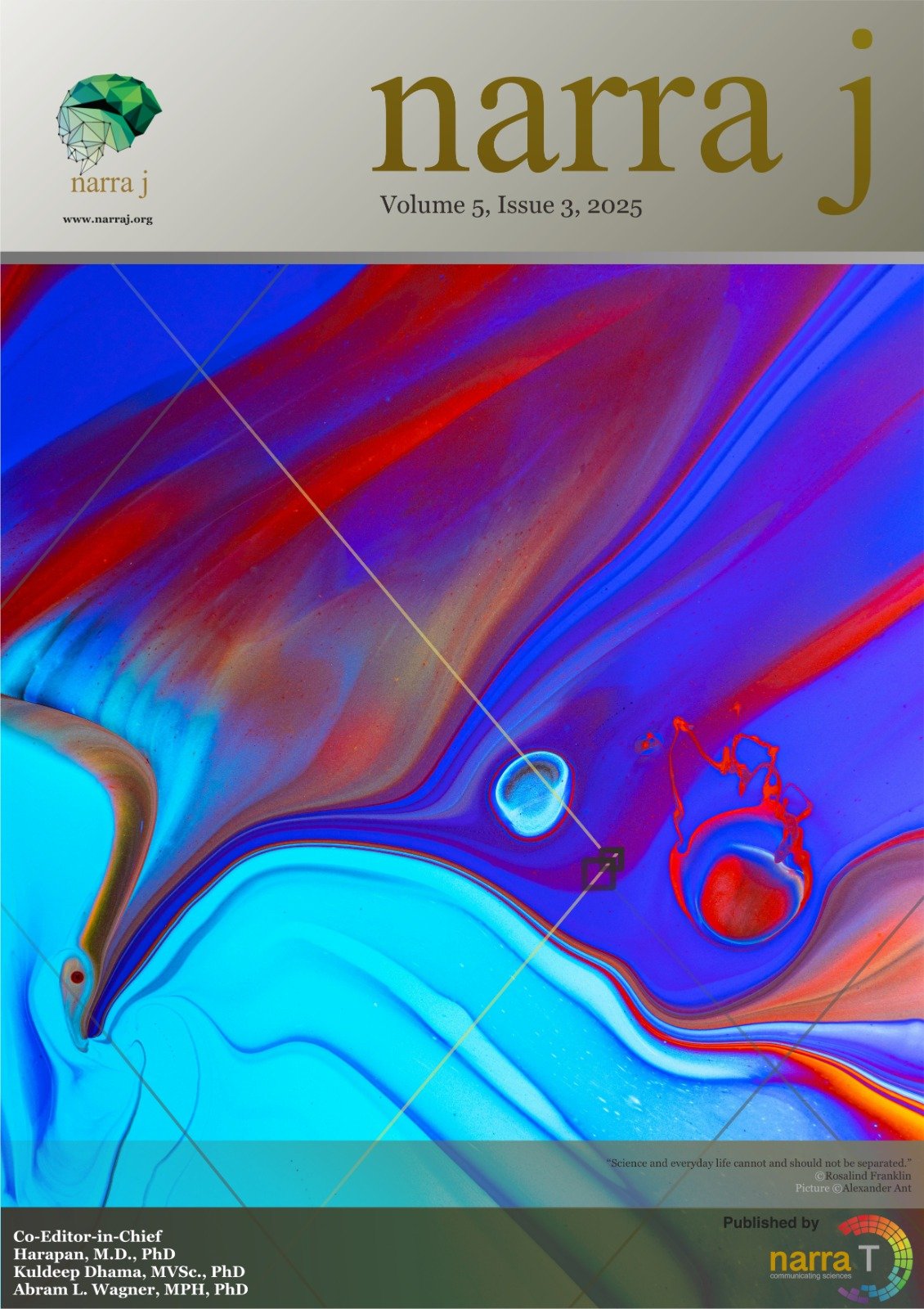Development of an inactivated viral transport medium for diagnostic testing in low-resource countries
DOI:
https://doi.org/10.52225/narra.v5i3.2068Keywords:
Inactivated VTM, SARS-CoV-2, inactivation, diagnostics, RT-qPCRAbstract
Viral transport medium (VTM) is crucial for retaining clinical specimens, such as the virus or its genetic material from the mucus of respiratory tract of coronavirus disease 2019 (COVID-19) suspected patients. However, the locally produced VTM in Indonesia lacks the ability to inactivate the virus, risking the safety of diagnostic personnel. The aim of this study was to formulate inactive VTM (iVTM) incorporating chaotropic agents like guanidine salt, along with anionic detergents, chelators, buffers, and surfactants, to inactivate the virus while maintaining RNA integrity. Viral RNA stability in iVTM (pH 4 and pH 6) was evaluated for 30 days at 4°C and 25–28°C. In vitro inactivation test was performed on SARS-CoV-2 isolate (variant B1). The stability test revealed that storing the clinical specimens in iVTM at pH 6 maintained severe acute respiratory syndrome coronavirus 2 (SARS‑CoV‑2) detectability by qPCR for up to 30 days at cold and room temperatures. Stability assessments conducted over a 4-month period (at 25–28°C) on iVTM with a pH of 6 revealed clear appearance, consistent pH stability, no alteration in the solution color, and no indications of bacterial or fungal contamination. Results from an in vitro inactivation assay demonstrated that iVTM pH 6 eliminated SARS-CoV-2 infectivity within just five minutes of contact. These findings suggest that iVTM pH 6 offers a safer and cost-effective alternative for handling and transportation of clinical specimens.
Downloads
Downloads
How to Cite
Issue
Section
Citations
License
Copyright (c) 2025 Silmi Rahmani, Karlia Meitha, Popi Septiani, Neil Priharto, Kamarisima Kamarisima, Ratih A. Ningrum, Marissa Angelina, Dian F. Agustiyanti, Popi H. Wisnuwardhani, Herjuno A. Nugroho, Marselina I. Tan

This work is licensed under a Creative Commons Attribution-NonCommercial 4.0 International License.



